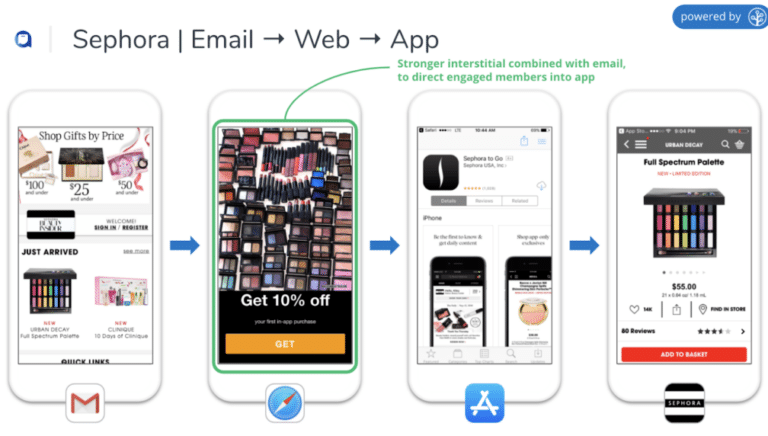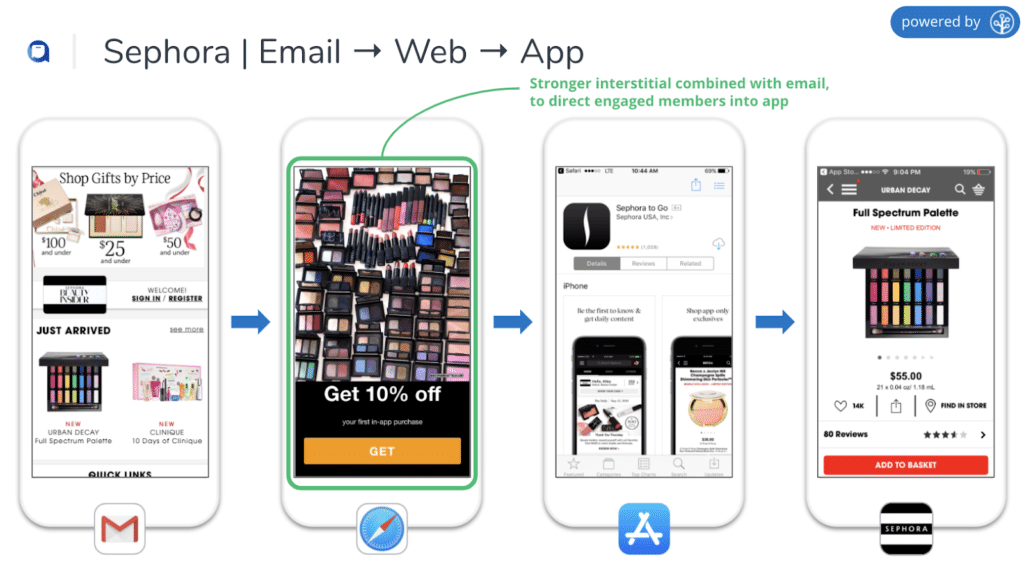COVID-19 has widely impacted retailers, and the prevalence of social distancing measures has only made it evident that brands need to adapt to meet the shift in consumer shopping behaviors. As retailers and direct-to-consumer brands finalize their plans for the peak holiday seasons, there’s no better time to take a closer look at your mobile growth strategy. According to Adobe’s Holiday 2019 recap, smartphones accounted for 84% of last holiday season’s e-commerce growth, with use cases like Buy Online Pick-up In-Store growing 35% YoY.
To help you prepare, I’ve outlined a few trends in the market and strategies we believe will provide a best-in-class shopping experience for your users this holiday season.
Trend #1: Deals are Starting Now
Amazon Prime Day kicks off today, and this year, it’s expected to generate $9.91 billion in sales worldwide, including $6.17 billion in the US, according to a forecast by eMarketer. To compete with Amazon, brands like Target, Best Buy, Walmart, Home Depot, and Bed Bath & Beyond are all rolling out deals early this year. Consumers have faced an unprecedented amount of challenges over the past seven months, and retailers want to help their customers by allowing them to shop how, when, and where they want.
According to a holiday survey conducted by Affirm, 7 in 10 respondents said they’re more likely to buy something on sale now, rather than waiting for the traditional Black Friday or Cyber Monday sales. It’s safe to say that the conventional timeline is shifting. Online retailers need to get ready for potential surges in online traffic throughout the extended shopping season.
Below are some best practices to follow to help you run effective eCommerce promotions.
Deep Link Discount and Promotion Codes
Of those planning to shop earlier this year, 56% plan to do so on a budget. Steep discounts and coupon codes are a crucial part of any holiday shopping experience, especially now given the state of the economy. It’s critical to make sure these discount codes are working correctly and can be applied seamlessly across platforms.
Offering a discount or an incentive to download your app is a great way to acquire new users. Converting a web user into an app user is extremely valuable, as app users are twice as likely to buy and return.
Here are a few strategies that have proven to be successful.
Journeys
With Branch Journey banners, you can target the promotion depending on where the user is in their path to conversion and their intent to purchase.
Take Sephora, for example. Sephora customers who clicked on the promotional email have already interacted with the brand, so Sephora knows their intent to shop or at least browse is pretty high. They are then shown a full-page interstitial on the mobile site offering a 10% discount for the first in-app purchase. The Journey banner seamlessly takes the user to the App Store to download the app, and upon launch, they are taken directly to the product listing page to continue making their purchase.
Example: Sephora
QR Codes
QR codes are making a comeback in 2020, and since Apple’s 2017 iOS 11 update, the iPhone camera can now scan QR codes with no third-party app required. Because of their dynamic nature, retailers can place them practically anywhere, from websites, emails, in-store displays, package inserts to the inside of shoes! Yes, really. Take a look inside any Nike sneaker.
Adding QR codes to marketing real estate that is already paid for drives free upside with additional App installs, and piggybacks the high intent of a recent purchase. Using Branch deferred deep links, retailers can embed promo codes within QR codes to enhance user onboarding.
Example: Wine.com
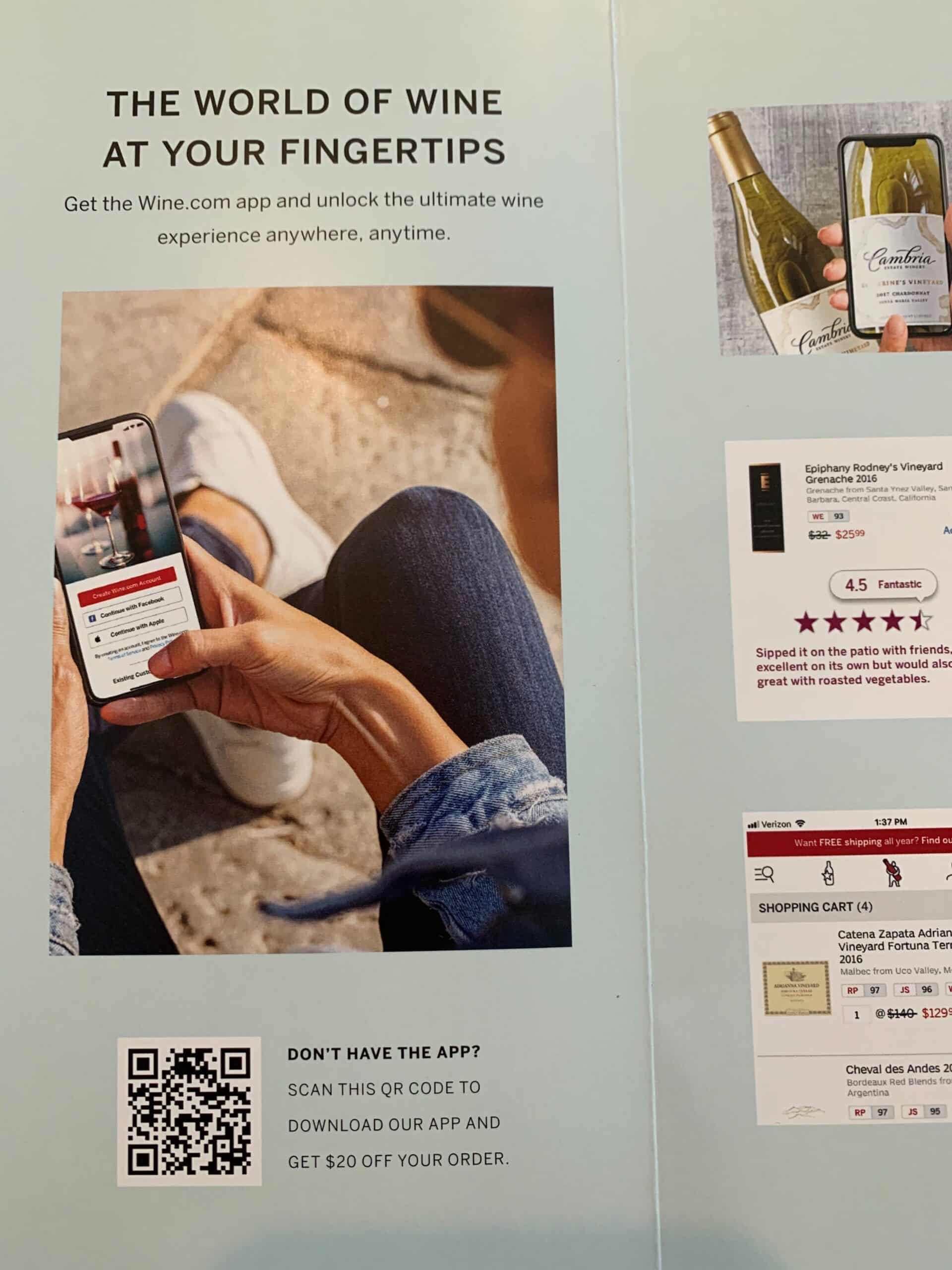
Influencer Marketing
Over the past few years, we’ve seen a rise in influencer marketing. Gen Z and Millennials follow influencers to be inspired and to learn about new trends. I can assure you this holiday season will be no different.
According to a 2019 survey from the Morning Consult, 50% of Millennials trust product recommendations by influencers they follow, compared to 38% for their favorite celebrities. Of those surveyed, 50% say social media is where they most often learn about new products, and 56% have purchased a product after seeing a post from someone they followed.Long story short – time is of the essence to tap into the world of influencer marketing. Partnering with a famous influencer is only the first step, though. You’ll want to provide a seamless shopping experience for the Gen Zers and Millennials like myself, who follow them. This can be done by providing influencers with Branch deep links to include in their Instagram stories that link directly to your app’s product page. Deep links and deep linked referrals are critical to utilize for user acquisition campaigns and to accurately attribute results.
Example: Boohoo.com
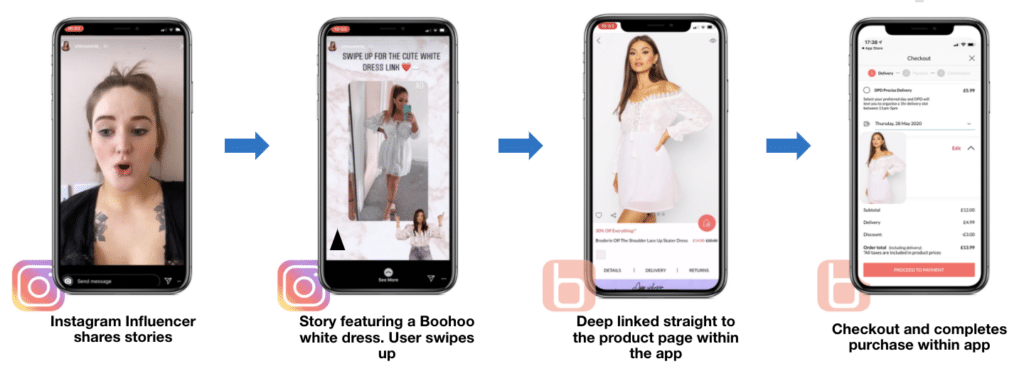
Trend #2: Online Will Dominate the 2020 Shopping Season
Since lockdown began back in March, consumer buying patterns and what they purchase have shifted to reflect their current environment. Parents want to make sure their loved ones are comfortable, athleisure has benefited from the second wave of New Year’s resolutions, and the need for new lipstick has taken a sharp decline now that people aren’t going out as much.
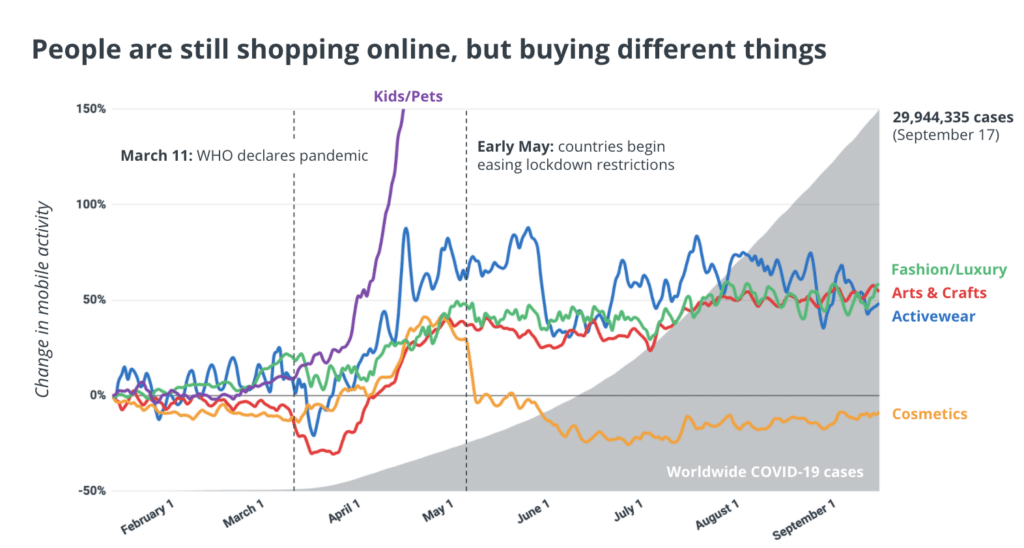
According to Google research, 75% of U.S. shoppers planning to shop this holiday season said they plan to shop online, with a third of millennials planning to do their shopping on mobile. As you can see in the graph below, both desktop and mobile have seen increased activity since January. That’s why, during these times, investing in cross-platform experiences is even more critical, specifically converting desktop web users to mobile app users.
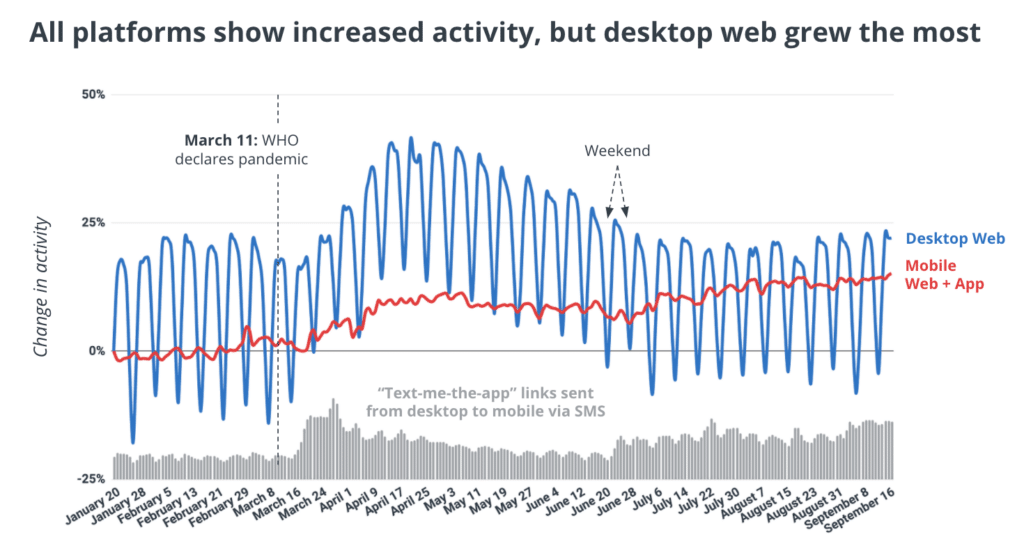
When preparing for the influx of online shopping, brands should aim to create a seamless cross-platform experience for their shoppers.
Build the Cross-Platform Bridge
While this might seem like an obvious one, you’d be surprised how many companies do not provide a seamless web to app experience. Building a bridge between channels helps you acquire new users and provides an omnichannel experience that has become an integral part of any successful eCommerce strategy.
Here are some examples of how brands are bridging the gap between desktop, offline, and mobile.
Journeys
Not only are Journey banners a great way to let your users know that you have an app, but it allows you to personalize and target your messaging based on the user. In one of our recent blog posts, we discussed how personalizing your Journey banner can increase the view-to-install ratio by 5X.
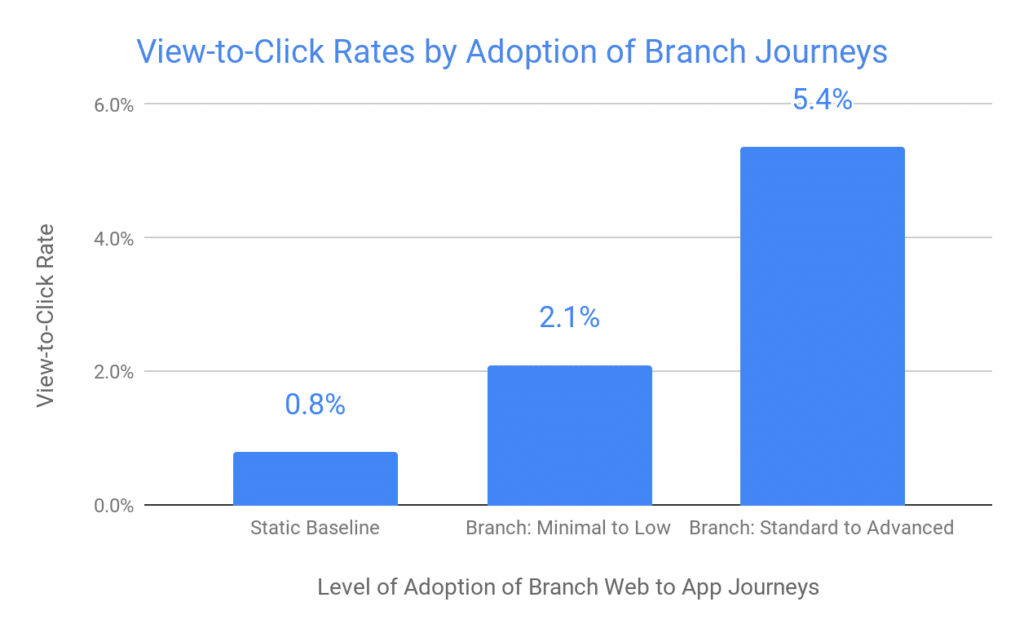
Banners can be deep linked to the same content inside the app, removing friction for the end-user. You can also personalize the banner content, depending on how active they are or if they already have the app installed.
Example: The Iconic
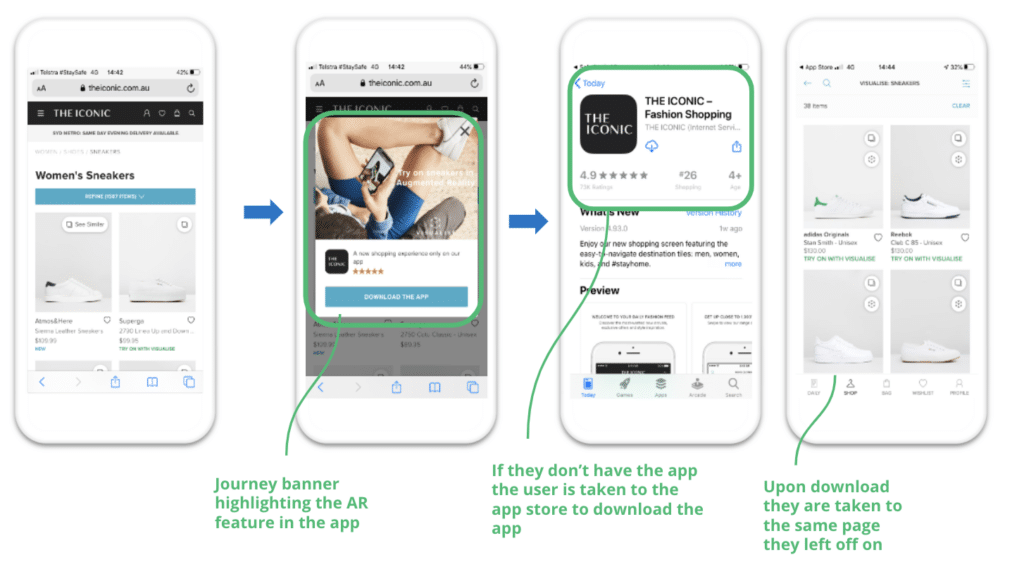
QR Codes
As I mentioned earlier, QR codes are a great way to provide a frictionless offline-to-app or web-to-app experience. In the example below, Nike uses QR codes on its desktop site to encourage users to download the app to get first access to the latest drops and exclusive content. The user experience is smooth, and it is a cost-effective way to drive traffic to your app.
Example: Nike
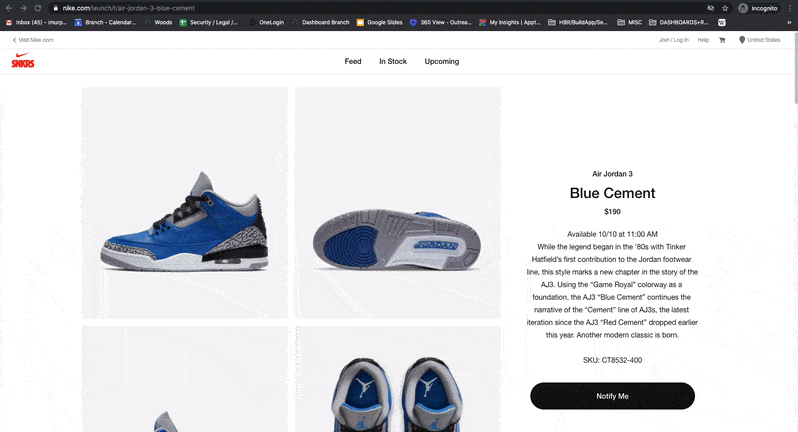
Text-Me-the-App
In the example below, Overstock presents text-me-the-app on its desktop site after a transaction. Users can enter their phone number and receive a link that leads them into the app to track their order. On average, the text-me-the-app feature has a 42% click-to-install rate. This low hanging fruit provides a seamless pathway from desktop to app and creates a better shopping experience for your users.
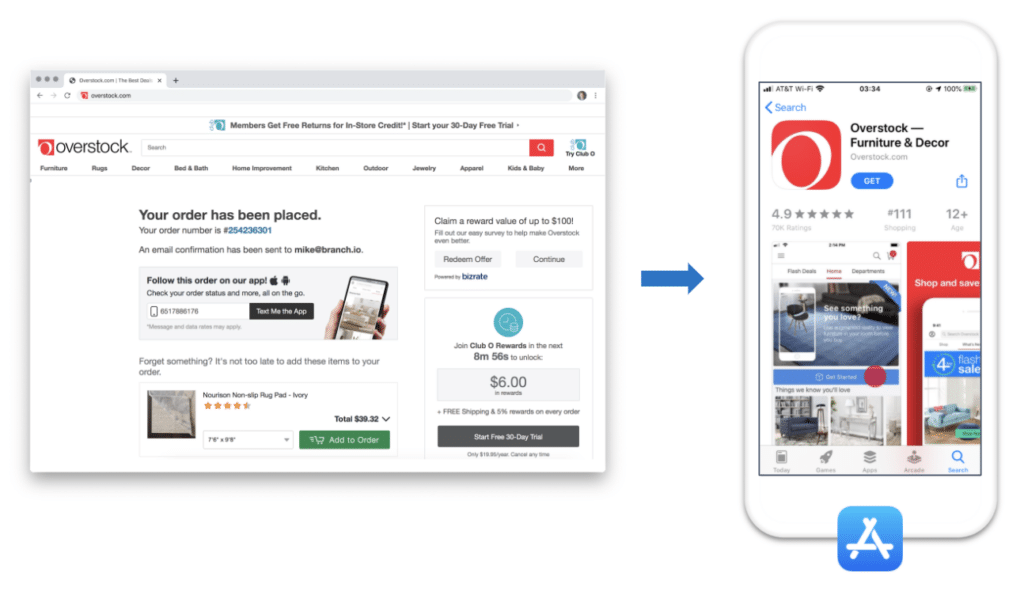
Streamline the Onboarding Process
Now that you’ve acquired new users, providing a seamless onboarding experience is a critical step in their journey. Let’s look at some of the stats around churn and retention that we highlighted in a previous blog post.
- 86% of new mobile users don’t return after their initial install
- 71% of app users churn within 90 days, according to Localytics
- Branch data finds that retention rates decline for both cross-platform and single-touchpoint customers over the course of four weeks
These stats highlight the significant role onboarding plays in the user lifecycle. Whether they are first-time shoppers or loyal customers, creating a frictionless user experience from the beginning will help retain your newly acquired users.
Here are a few tips to successfully onboard eCommerce shoppers to your app.
Highlight Key Benefits of Your App
Users need to know WHY they should download your app. For example, push notifications can provide access to the latest releases, personalized offers, and order updates. At the same time, Location Services allows users to access in-store and location-based features such as Buy Online Pick-up In-Store. App benefits such as these will only improve the user experience, so it’s essential to highlight them initially.
Remove Friction and Only Capture Key Information
Let’s face it, no one wants to miss out on killer Black Friday deals, but having to enter in all of your information during sign-up can lead to drop-off. During the onboarding process, it’s essential to keep things short and sweet. Stick to capturing key user information and if you can, offer social logins like Facebook and Gmail.
Provide Relevant Content and Offers
Consumers will be overloaded with holiday offers and discounts this season, so shorten the path to conversion by providing personalized content and deals directly on the homepage of your app.
Example: Walmart
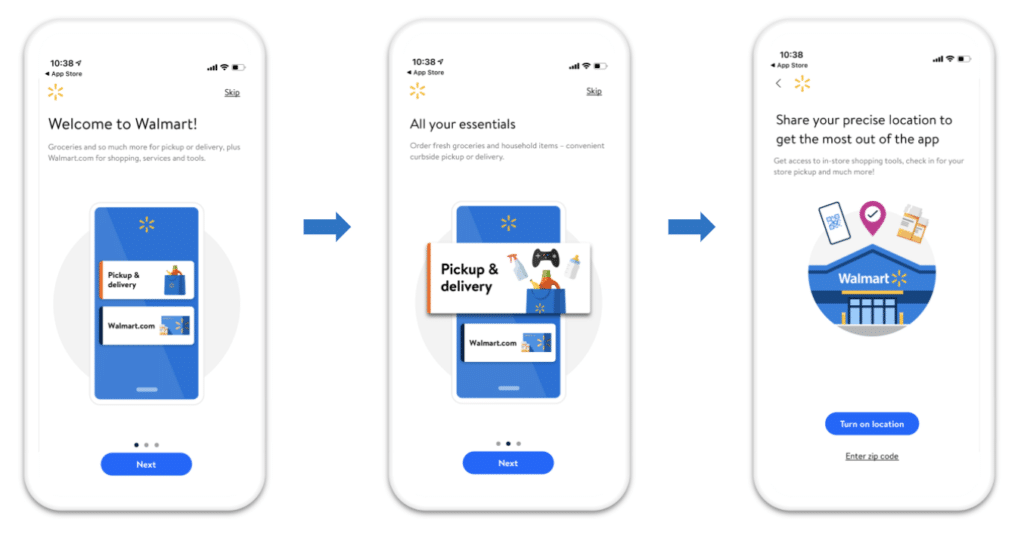
In this example, Walmart emphasizes the app’s value proposition. Exciting features and impressive functionality are important, but showing users just what they can do with those features, e.g. your value proposition, will win them over the long term.
Trend #3: Safety Will be a Top Priority
While the holiday season will help lift spirits, retailers will be putting their customers’ and employees’ safety first by offering safer ways to shop and increasing social distancing measures.
More Ways to Shop with BOPIS and Curbside Pickup
Before COVID-19, BOPIS or Buy Online Pick Up In-Store was seen as an added benefit to the everyday shopping experience, but certainly not a must-have feature. Now, BOPIS has become an essential part of the COVID-era retail experience. It helps keep shoppers and employees safe by reducing in-person interactions and allows businesses to sell products despite increased restrictions and foot-traffic limitations. According to Digital Commerce 360, 90% of retailers are expected to offer BOPIS by 2021, with retailers like Lowe’s, Target, and Walmart already leading the way. For those who would prefer not to step foot in a store this holiday season, major retailers are also offering contactless Curbside Pickup to help keep shoppers safe.
The surge of online shopping is expected to create delays and bottlenecks in the delivery process. Offering more ways to shop like Buy Online Pick Up In-Store and Curbside Pickup will give shoppers more flexibility while putting the safety of themselves and their loved ones first. With Branch, brands can enhance the user shopping experience by converting desktop and mobile web users to multi-platform users with features such as post-purchase Journeys full-page interstitials or text-me-the-app.
Example: Target

Clearly Communicate New Policies
Retailers are expected to increase social distancing measures this season to ensure a safe shopping experience for their customers. From capacity limitations, store hours, social distancing, and mask requirements, retailers should communicate important information that could impact their experience.
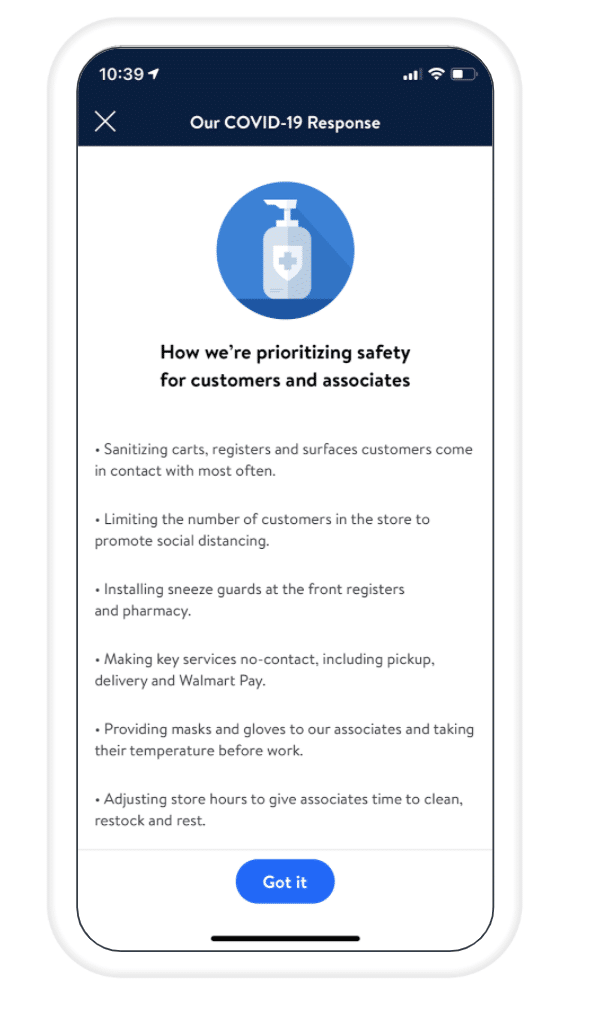
Wrapping Up
This year, businesses and consumers hope to end a challenging year on a high note. Preparing for this holiday season is no small task. Many experts predict that the trends adopted this year will be around for the long-run. With brick-and-mortar stores closed during lockdown, businesses have accelerated their digital offerings to create a safer, more enjoyable shopping experience for everyone involved.






















